Here is a typical example of the Racism we talk about, when the highest court is so immoral and corrupt that it leaves in place the shooting death of a naked, unarmed human being by state agents.
How does a country move forward or even speak to injustice in others when it is so rotten at its own core? (mb)
Supreme Court rejects case of Oklahoma teen killed by police
The Supreme Court won’t hear a civil rights case brought by the parents of a teenager who was naked and unarmed when he was fatally shot by an Oklahoma police officer in 2019.
The high court on Monday rejected without comment the lawsuit bought by the parents of Isaiah Lewis. Police have said that the 17-year-old was shot after he broke into a home in Edmond and attacked two officers. They have said that a stun gun had no effect on him.
Lewis’ lawyers wrote that on the day he was shot he had inadvertently smoked marijuana laced with PCP. His parents argued that he was experiencing a mental health crisis and that police used excessive force. An autopsy report found Lewis suffered a total of four gunshot wounds to his face, thighs and groin. A federal trial court judge had allowed the lawsuit against the officer who shot Lewis to go forward, but a three-judge panel of the 10th U.S. Circuit Court of Appeals in Denver reversed that ruling. The Supreme Court’s decision not to take the case leaves the appeals court ruling in place.
Police chief fires officer, releases video of shooting death.
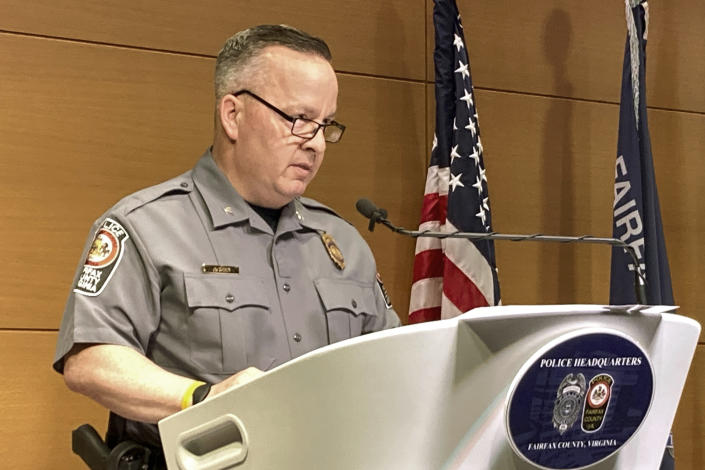
A northern Virginia police officer was fired Thursday after fatally shooting a man last month who had allegedly stolen two pairs of sunglasses from a busy shopping mall. Police also released video of the deadly encounter.
Fairfax County Police Chief Kevin Davis announced the dismissal at a press conference where he also played body camera footage showing the shooting of Timothy McCree Johnson outside Tysons Corner Center on Feb. 22.
Two officers who chased Johnson that night fired their weapons, Davis said. The one who fired the fatal round into his chest has been dismissed from the department, and the other officer remains on restricted duty as the investigation continues.
The officer who was fired, Sgt. Wesley Shifflett, exhibited “a failure to live up to the expectations of our agency, in particular use of force policies,” Davis said.
Caleb Kershner, an attorney for Shifflett, said his client will appeal his dismissal and expects to be exonerated. He said Shifflett acted as he was trained to do, using lethal force if he has a reasonable belief his life is in danger. Kershner said Shifflett saw Johnson reaching for his waistband as though reaching for a weapon. “You have to make a split-second decision, and it’s a life-or-death split-second decision,” Kershner said. The video itself shows a nighttime chase that lasted less than two minutes, with the officers running after him out of the mall, through a parking garage, across a street and into a wooded area. In a slow-motion version of the video that police played at Thursday’s press conference, it sounds as though two shots were fired after an officer yelled “get on the ground” but just before shouting “stop reaching.” A third shot is also heard. The video is dimly lit and it is difficult to see Johnson in any detail once they are out of the mall.
Johnson’s family was shown the video on Wednesday, a day ahead of it public release. After viewing it, family attorney Carl Crews called Johnson’s death “an execution by a Fairfax County police officer.” On Thursday, he said the family will continue to seek justice.
“The administrative separation of the officer by Chief Davis corroborates what I saw in footage which was several violations of police procedures. However, Justice for Timothy continues (because) no one has been charged with his murder,” he said. Johnson’s mother, Melissa Johnson, on Wednesday said Davis “painted a negative half-truth about our son” when he described Johnson immediately after the shooting as someone with a “significant violent criminal history.” Johnson had no criminal record in Fairfax County, court records show. He did have assault and gun convictions against him in Maryland and the District of Columbia.
At Thursday’s press conference, Davis apologized for how he characterized Johnson the night of the shooting. He said he was trying to anticipate reporters’ questions about whether Johnson had a criminal history. “I should have answered it with much greater sensitivity than I did,” he said. Davis said the agency has gone back through eight years of records, and this is the only time officers fired shots at a suspect during a foot chase. He said he wants to develop a policy specific to officer conduct during a foot chase that takes into account the training they already receive. Preliminary research shows that only 18 police departments across the country have such a policy in place, he said. “There is no shining best practice out there,” he said.
No charges have been filed against the officers. Fairfax County Commonwealth’s Attorney Steve Descano has said he is reviewing the case and will make a decision in the coming weeks.
Fairfax County Board of Supervisors Chairman Jeff McKay issued a statement Thursday calling the video “disturbing to say the least.” “Under no circumstances should suspicion of shoplifting alone lead to the tragic loss of human life,” McKay said.
The video’s release comes as seven Virginia sheriff’s deputies in Henrico County, near Richmond, and three hospital workers have been charged with second-degree murder in the death of a Black inmate with mental-health issues. Irvo Otieno died while being transferred to a state hospital; video released Tuesday in Otieno’s case shows the deputies and workers surrounding and pinning Otieno to the floor.
LAPD SWAT raid wrecked this man’s print shop. He can’t get
compensation
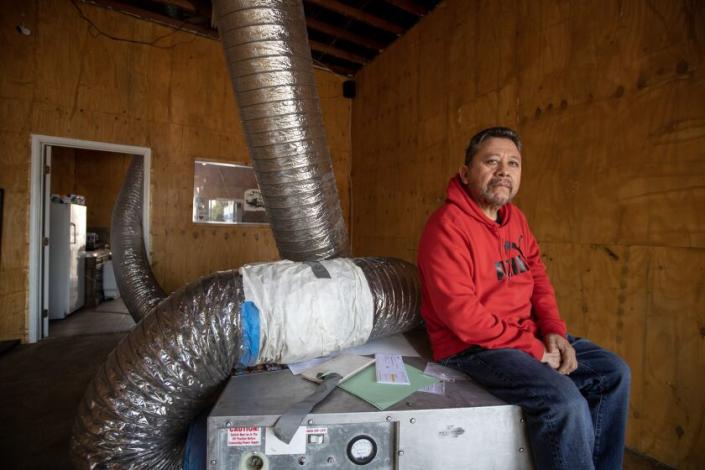 Print shop owner Carlos Pena is dealing with the damage caused by a SWAT raid after a fugitive holed up in his North Hollywood store. (Brian van der Brug /Los Angeles Times)For 13 years, Carlos Pena has run NoHo Printing & Graphics in North Hollywood. He has stayed here even as this stretch of Lankershim Boulevard became sketchier, even as the COVID-19 pandemic forced him to lay off all his employees. “It’s a very creative field of work, but not very profitable,” the Salvadoran immigrant told me half-jokingly as we walked inside his shop. “But it’s mine.” What was once the showroom was now stripped down to nails, plywood and beams. Industrial-sized air conditioner units and fans sat where display cases and T‑shirt racks once were, a reminder of the day last summer when Pena’s life changed forever
Print shop owner Carlos Pena is dealing with the damage caused by a SWAT raid after a fugitive holed up in his North Hollywood store. (Brian van der Brug /Los Angeles Times)For 13 years, Carlos Pena has run NoHo Printing & Graphics in North Hollywood. He has stayed here even as this stretch of Lankershim Boulevard became sketchier, even as the COVID-19 pandemic forced him to lay off all his employees. “It’s a very creative field of work, but not very profitable,” the Salvadoran immigrant told me half-jokingly as we walked inside his shop. “But it’s mine.” What was once the showroom was now stripped down to nails, plywood and beams. Industrial-sized air conditioner units and fans sat where display cases and T‑shirt racks once were, a reminder of the day last summer when Pena’s life changed forever
On Aug. 3 just after lunch, the 55-year-old was working on an order when he heard what sounded like a helicopter and someone on a megaphone. Pena opened the back door, looked toward the street and saw U.S. Marshals Service agents yelling and gesturing his way. Before he could shut the door, a man hit him on the shoulder with a metal object, kicked him out, then holed up inside.
YouTube footage shows marshals with heavy artillery and bulletproof vests taking positions around NoHo Printing and on nearby rooftops. They then stand down when Los Angeles Police Department SWAT vehicles roll into the parking lot behind the shop. Popping sounds soon give way to plumes of tear gas.
For 13 hours, Pena waited in a nearby restaurant as the standoff continued with someone the cops said was a fugitive. He waited so long that the restaurant eventually asked him to leave because it needed to close.
“It was like a movie,” said Pena, shaking his head, his voice world-weary. “Out of 10 million businesses, that stupid dude chose mine.”
Two days later, marshals let Pena return to NoHo Printing. Client projects were strewn across the floor. Holes were smashed into doors, walls and even the ceiling, which the fugitive climbed into by placing a ladder on a copier. He had somehow escaped.
“Look, look,” Pena kept repeating while swiping through photos on his smartphone. “This is a $9,000 printer that the fugitive stood on and broke.”
The worst part, he said, was the stench of tear gas. “You couldn’t be next to it for even a minute without gagging.”
No neighboring businesses suffered damage. Pena had to toss out all his materials — ink toners, vinyl rolls, packing materials. His landlord had to strip out all the drywall and insulation. The claim Pena filed with the U.S. Marshals Service stated that although the fugitive did destroy equipment, it was SWAT’s tear gas that left NoHo Printing “[un]inhabitable.”
A few years earlier, Pena had switched to a cheaper insurer, who said events like this weren’t covered under his policy. The L.A. city attorney’s office denied his claim in August with no explanation. The U.S. Marshals Service initially rejected his claim, saying he hadn’t asked for a specific amount. When he replied with a detailed invoice for about $60,000, the agency denied him again.
Though marshals had pursued the fugitive to NoHo Printing, they argued that LAPD SWAT had engaged in the standoff, not them. The certified letter ended by providing Pena with the LAPD’s address and the suggestion to “pursue your claim directly with” the department.
In response to my query, the U.S. Marshals Service said, “Our office cannot offer substantive comments regarding adjudication” of Pena’s claim. When I called up the LAPD’s media department to confirm details of the Aug. 3 raid, Officer Drake Madison suggested I file a public records request.
When I sent a list of questions about Pena’s case and also asked what the LAPD policy was when officers damage a business in the search for a suspect, LAPD Capt. Kelly Muniz replied that while Pena’s claims “are under consideration, we are unable to comment further.”
Pena’s travails make Job seem as lucky as that guy who recently won a $2‑billion Powerball jackpot
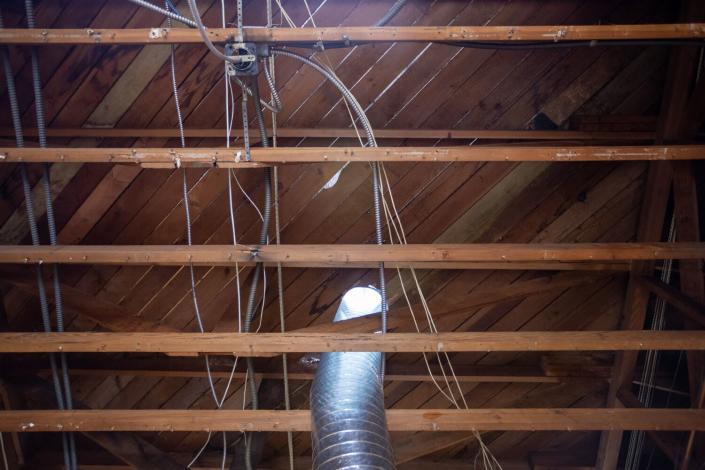
Since the U.S. Marshals Service and the LAPD wouldn’t give me any answers, I called up two people who would.
Attorney Arnoldo Casillas, who specializes in police misconduct, doesn’t see too many cases like Pena’s but considers them “my pro bono responsibility” because they are so hard to pursue.
He brought up the LAPD’s botched detonation of a cache of fireworks in a South L.A. neighborhood in 2021 that left cars overturned, homes wrecked and some residents still unable to return.
LAPD Chief Michel Moore quickly apologized, but “they’re fighting tooth and nail to not pay anything,” Casillas said. “I’m not suggesting [Pena’s case] is at the same level, but $60,000 in damages is not a small amount.”
State and federal statutes “give police a certain amount of discretion” when pursuing suspects. “Some dishes are going to break,” he said, so the damage “has to be egregious to the point that it’s malicious.”
Pena’s claim with the U.S. Marshals Service stated that SWAT fired 31 tear gas canisters inside his shop, which sure sounds egregious to me.
It’s hard to get compensation without knowing the intricacies of the system — victims need to file a specific claim within six months of the incident and file it the right way, Casillas said.
“I’ve seen cases where a lawsuit is filed, and the police say they only received a complaint, not a claim, and the lawsuit can’t go anywhere. It’s a petty bulls— way getting around to not paying anything. They truly don’t care.”
Tanishia G. Wright, director of the L.A. County district attorney’s office’s Bureau of Victim Services, called Pena’s case “a very tricky one. … [LAPD] really put him at an extreme injustice for that.”
She said her office “luckily” doesn’t see many similar cases. It refers people to the California Victims Resource Center, which offers reimbursement for qualifying damages. Wright’s office has an unclaimed victim restitution fund, and “we can tap into that” to try to make up any difference, she said.
When I asked about the LAPD’s policy when officers damage the property of innocent people, Wright stayed silent.
“I can’t tell you,” she replied. “Honestly, I should know. I’m curious to know. We may have victims that might have these questions.”
Both Casillas and Wright offered to speak to Pena about his case.
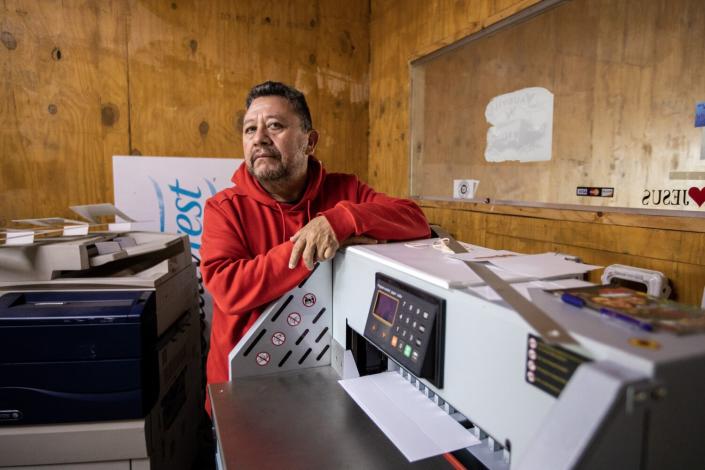
Pena is enough of a neighborhood fixture that customers such as Eric Walter have tried to help him navigate the ordeal.
“In an ideal world, he should get compensation for lost revenue,” said Walter, a retired athletic director for the nearby Oakwood School who has been a customer for nearly a decade. “But at this point, he’d be happy just to get back to business.”
“My claim is going to be denied,” Pena said. His piercing blue eyes had a thousand-yard stare. “If that happens, I’m going to have to sell my house. My business is finally going to be dead.”
We walked to the back room, cluttered with messy cabinets, a desk and a tub of T‑shirts with an air-tight seal that saved it from the raid.
Pena now works from home, going to his shop only to use the two machines that survived the raid — a cutter, along with a copier that needs a $1,200 part he can’t afford.
His landlord is pursuing claims with the LAPD and an insurer and isn’t charging any rent in the meantime.
“Everyone else gets help,” Pena replied, referring to the recent bribery scandals that have plagued City Hall. “Look at all the money going around the city, and they can’t do anything to help?”
We now stood outside his storefront. A stenciled ad on his window offered a special: Anything printed on a T‑shirt for $6.50.
Pena let out a bitter laugh. It has been a rough couple of years. His father was suffering health issues. He lost his mother to COVID-19 in 2020, while he was battling the disease himself. Even though they were in the same hospital, doctors didn’t allow him to say goodbye.
“When doors are closed, they all shut down for you,” he said. “I’ve been going through hell and back. Everything is pouring down on me.”
This story originally appeared in Los Angeles Times.
Deputies accused of shoving guns in mouths of 2 Black men
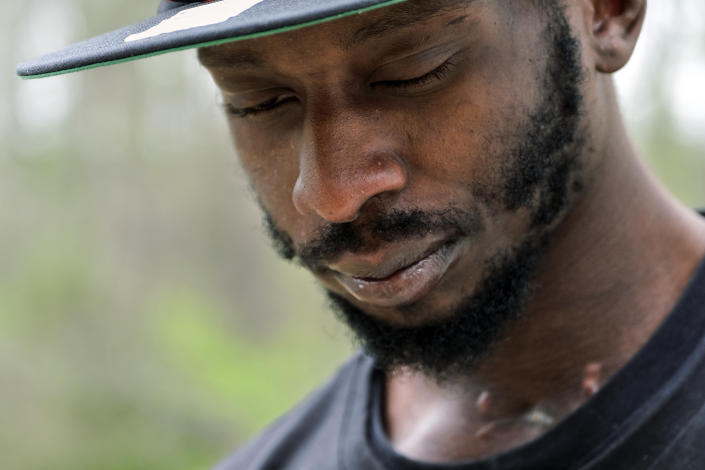
ASSOCIATED PRESS
Several deputies from a Mississippi sheriff’s department being investigated by the Justice Department for possible civil rights violations have been involved in at least four violent encounters with Black men since 2019 that left two dead and another with lasting injuries, an Associated Press investigation found.
Two of the men allege that Rankin County sheriff’s deputies shoved guns into their mouths during separate encounters. In one case, the deputy pulled the trigger, leaving the man with wounds that required parts of his tongue to be sewn back together. In one of the two fatal confrontations, the man’s mother said a deputy kneeled on her son’s neck while he told them he couldn’t breathe.
Police and court records obtained by the AP show that several deputies who were accepted to the sheriff’s office’s Special Response Team — a tactical unit whose members receive advanced training — were involved in each of the four encounters. In three of them, the heavily redacted documents don’t indicate if they were serving in their normal capacity as deputies or as members of the unit.
Such units have drawn scrutiny since the January killing of Tyre Nichols, a Black father who died days after being severely beaten by Black members of a special police team in Memphis, Tennessee. Nichols’ death led to a Justice Department probe of similar squads around the country that comes amid the broader public reckoning over race and policing sparked by the 2020 police murder of George Floyd in Minneapolis.
In Mississippi, the police shooting of Michael Corey Jenkins led the Justice Department to open a civil rights investigation into the Rankin County Sheriff’s Department. Jenkins said six white deputies burst into a home where he was visiting a friend, and one put a gun in his mouth and fired. Jenkins’ hospital records, parts of which he shared with AP, show he had a lacerated tongue and broken jaw.
Deputies said Jenkins was shot after he pointed a gun at them; department officials have not answered multiple inquiries from the AP asking whether a weapon was found at the scene. Jenkins’ attorney, Malik Shabazz, said his client didn’t have a gun.
“They had complete control of him the entire time. Six officers had full and complete control of Michael the entire time,” Shabazz said. “So that’s just a fabrication.”
Rankin County, which has about 120 sheriff’s deputies serving its roughly 160,000 people, is predominantly white and just east of the state capital, Jackson, home to one of the highest percentages of Black residents of any major U.S. city. In the county seat of Brandon, a towering granite-and-marble monument topped by a statue of a Confederate soldier stands across the street from the sheriff’s office.
In a notice of an upcoming lawsuit, attorneys for Jenkins and his friend Eddie Terrell Parker said on the night of Jan. 24 the deputies suddenly came into the home and proceeded to handcuff and beat them. They said the deputies stunned them with Tasers repeatedly over roughly 90 minutes and, at one point, forced them to lie on their backs as the deputies poured milk over their faces. The men restated the allegations in separate interviews with the AP.
When a Taser is used, it’s automatically logged into the device’s memory. The AP obtained the automated Taser records from the evening of Jan. 24. They show that deputies first fired one of the stun guns at 10:04 p.m. and fired one at least three more times over the next 65 minutes. However, those unredacted records might not paint a complete picture, as redacted records show that Tasers were turned on, turned off or used dozens more times during that period.
The Mississippi Bureau of Investigation was brought in to investigate the encounter. Its summary says a deputy shot Jenkins at approximately 11:45 p.m., or about 90 minutes after a Taser was first used, which matches the timeframe given by Parker and Jenkins. The deputy’s name was not disclosed by the bureau.
Police say the raid was prompted by a report of drug activity at the home. Jenkins was charged with possessing between 2 and 10 grams of methamphetamine and aggravated assault on a police officer. Parker was charged with two misdemeanors — possession of paraphernalia and disorderly conduct. Jenkins and Parker say the raid came to a head when the deputy shot Jenkins through the mouth. He still has difficulty speaking and eating.
Another Black man, Carvis Johnson, alleged in a federal lawsuit filed in 2020 that a Rankin County deputy placed a gun into his mouth during a 2019 drug bust. Johnson was not shot.
There is no reason for an officer to place a gun in a suspect’s mouth, and to have allegations of two such incidents is telling, said Samuel Walker, emeritus professor of criminal justice at the University of Nebraska.
“If there are incidents with the same kind of pattern of behavior, they have their own set of rules,” he said. “So these are not just chance experiences. It looks like a very clear pattern.”
Jenkins doesn’t know the name of the deputy who shot him. In the heavily redacted incident report, an unidentified deputy wrote, “I noticed a gun.” The unredacted sections don’t say who shot Jenkins, only that he was taken to a hospital. Deputy Hunter Elward swore in a separate court document that Jenkins pointed the gun at him.
Elward’s name also appears in police reports and court records from the two incidents in which suspects were killed.
The sheriff’s department refused repeated interview requests and denied access to any of the deputies who were involved in the violent confrontations. The department has not said whether deputies presented a search warrant, and it’s unclear if any have been disciplined or are still members of the special unit.
The news outlet Insider has been investigating the sheriff’s department and persuaded a county judge to order the sheriff to turn over documents related to the deaths of four men in 2021. Chancery Judge Troy Farrell Odom expressed bewilderment that the department had refused to make the documents public.
“(The) day that our law enforcement officers start shielding this information from the public, all the while repeating, ‘Trust us. We’re from the government,’ is the day that should startle all Americans,” Odom wrote.
The AP requested body camera or dashcam footage from the night of the Jenkins raid. Jason Dare, an attorney for the sheriff’s department, said there was no record of either.
Mississippi doesn’t require police officers to wear body cameras. Incident reports and court records tie deputies from the raid to three other violent encounters with Black men.
During a 2019 standoff, Elward said Pierre Woods pointed a gun at him while running at deputies. Deputies then shot and killed him. In a statement to the Mississippi Bureau of Investigation obtained by the AP, Elward said he fired at Woods eight times. Police say they recovered a handgun at the scene of the Woods shooting.
Court records place Christian Dedmon, another deputy who shot at Woods, at the Jenkins raid.
Dedmon was also among deputies involved in a 2019 arrest of Johnson, according to the lawsuit Johnson filed alleging that one of the deputies put a gun in his mouth as they searched him for drugs. Johnson is currently imprisoned for selling methamphetamine.
Other documents obtained by the AP detail another violent confrontation between Elward and Damien Cameron, a 29-year-old man with a history of mental illness. He died in July 2021 after being arrested by Elward and Deputy Luke Stickman, who also opened fire on Woods during the 2019 standoff. A grand jury declined to bring charges in the case last October.
In an incident report, Elward wrote that while responding to a vandalism call, he repeatedly shocked Cameron with a Taser, punched and grappled with Cameron at the home of his mother, Monica Lee. He said after getting Cameron to his squad car, he again stunned him to get him to pull his legs into the vehicle.
After going back inside to retrieve his Taser, deputies returned to find Cameron unresponsive. Elward wrote that he pulled Cameron from the car and performed CPR, but Cameron was later declared dead at a hospital.
Lee, who witnessed the confrontation, told the AP that after subduing her son, Elward kneeled on his back for several minutes. She said when Stickman arrived, he kneeled on her son’s neck while handcuffing him, and that her son complained he couldn’t breathe.
Lee said she later went outside, hoping to talk to her son before the deputies drove him away.
“I walked outside to tell him goodbye and that I loved him, and that I would try to see him the next day. That’s when I noticed they were on the driver’s side of the car doing CPR on him,” Lee said. “I fell to the ground screaming and hollering.”
___





















